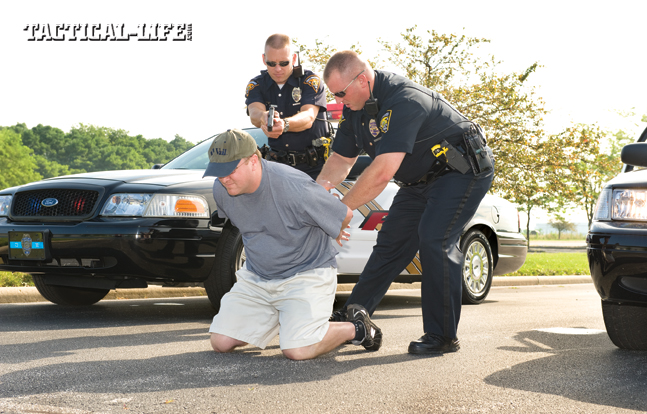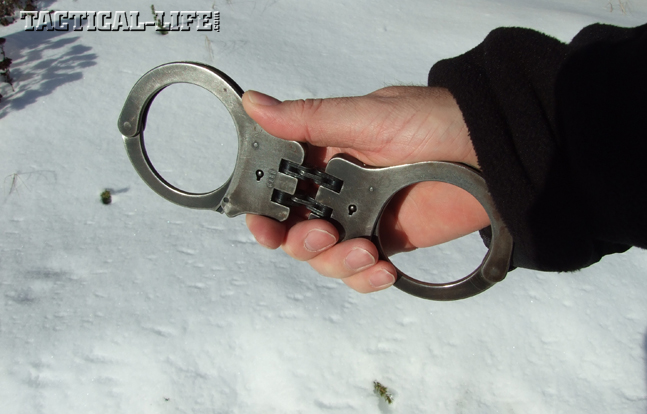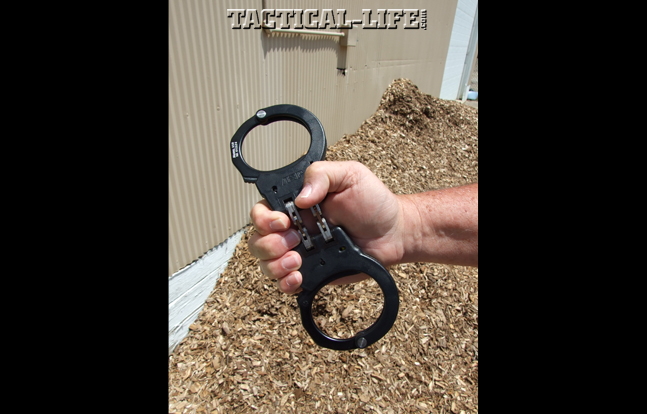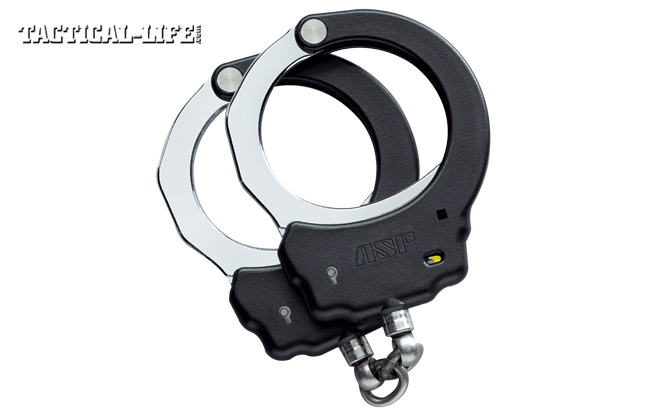Today’s threats require that law enforcement officers constantly build, maintain and reinforce their skill sets—such as restraining suspects-with the best equipment available. In the upcoming July 2014 issue of GUNS & WEAPONS FOR LAW ENFORCEMENT, author Scott W. Wagner provides a good article on beefing up your skills with some of the latest LE handcuffs and tactics for keeping suspects within your control.
Wagner writes, “There are some fundamental principles that need to be followed in order for an officer to make the most of their handcuffs and maintain their safety.
“1. Establish unquestionable control over your arrestee. This means making it clear by officer command presence and verbalization that any particular violator is under arrest and that the game is over.
Advertisement — Continue Reading Below
“2. Get the handcuffs on the wrists as quickly as you can. Studies indicate that 67 percent of all resistance begins at the point the first handcuff shackle is applied. You need to practice quickly applying handcuffs to the point where, once you assume physical control of a cooperating average-sized arrestee, you can cuff them in two seconds or less.
“3. In every situation possible, handcuff field arrests from behind. Incarcerated offenders ready for transport can be handcuffed in front, but use a bellyband to secure the handcuffs close to their body.
“4. Once the handcuffs are applied in any situation, make sure the shackles are tightened only to a point where you can fit your pinky finger between the shackle and the arrestee’s wrist to prevent nerve damage. Then double-lock the handcuffs so that they cannot become tighter if the suspect is leaning back against them.”
Advertisement — Continue Reading Below
To learn more, check out the July 2014 issue of GUNS & WEAPONS FOR LAW ENFORCEMENT, available on newsstands and digitally April 8, 2014. To subscribe, go to /guns-weapons-for-law-enforcement


























